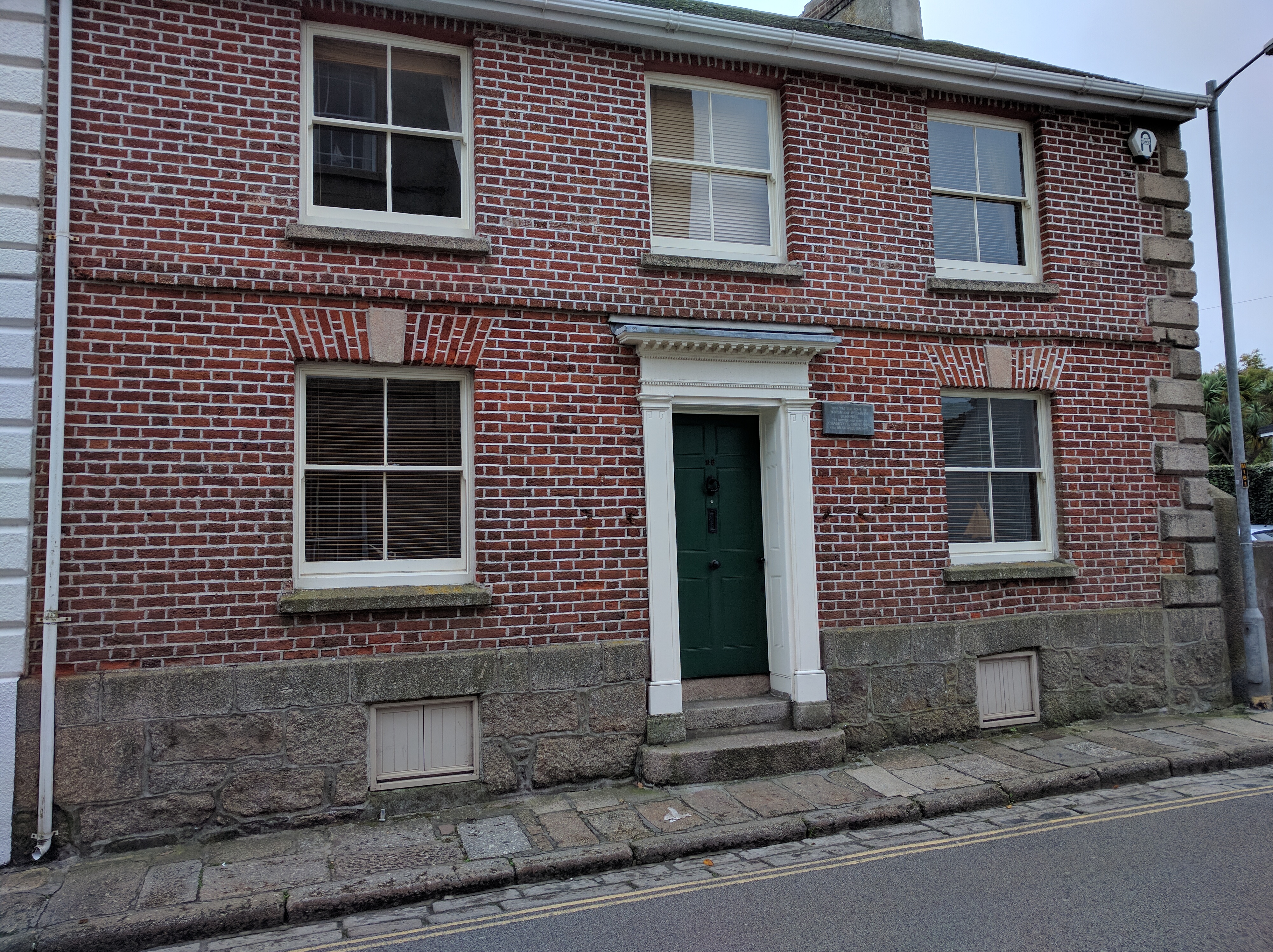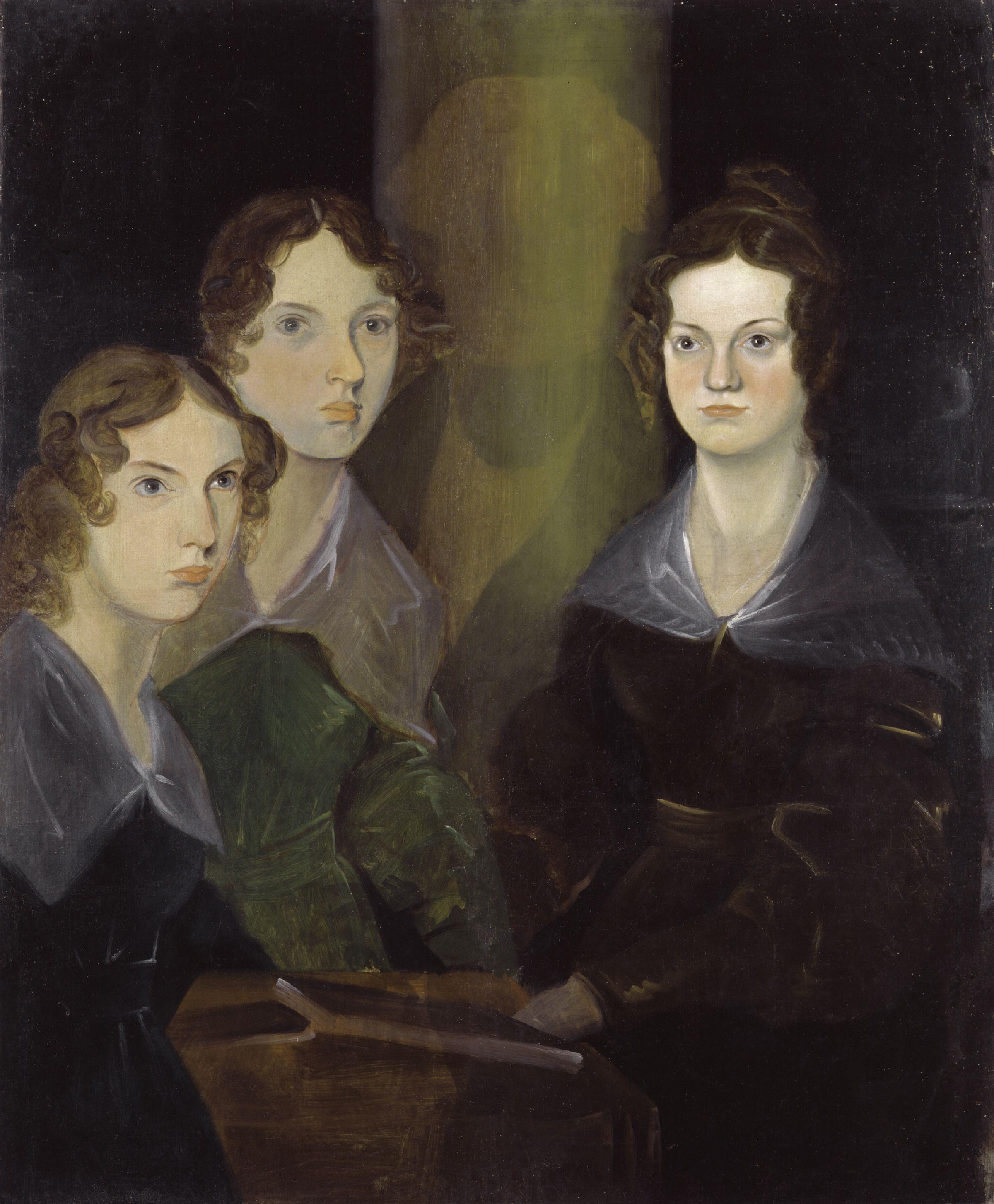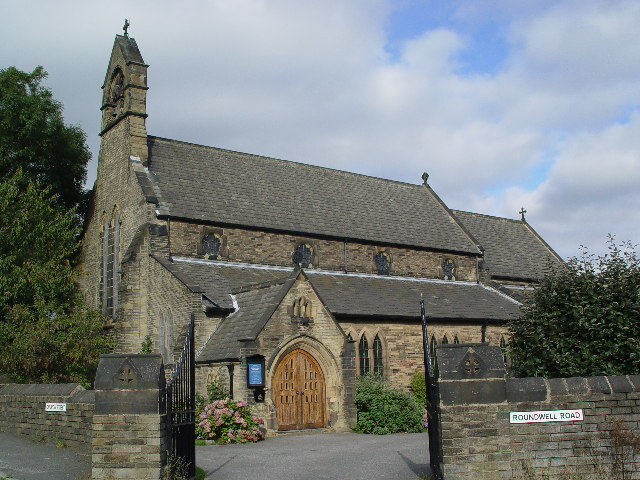|
Maria Branwell
Maria Branwell (15 April 1783 – 15 September 1821) is best known as being the mother of British writers Emily Brontë, Anne Brontë, Charlotte Brontë and of their brother Branwell Brontë, who was a poet and painter. Maria married Patrick Brontë on 29 December 1812. Early life Maria Branwell was the eighth child of twelve born to Thomas Branwell and Anne Carne in Penzance, Cornwall, although only five daughters and one son grew to adulthood. Thomas Branwell was a successful merchant and owned many properties throughout the town. The men of the Branwell family took part in the town's public life. Maria's brother, Benjamin, was mayor in 1809. The family were prominent Methodists. Thomas's sister and two of his daughters married clergymen of Wesleyan leanings: his sister Jane married John Fennell in 1790. His daughter Jane Branwell married John Kingston in 1800, and Maria married Patrick Brontë in 1812. The first Wesleyan Methodist chapel was built in Penzance in 1814, ... [...More Info...] [...Related Items...] OR: [Wikipedia] [Google] [Baidu] |
Patrick Brontë
Patrick Brontë (, commonly ; born Patrick Brunty; 17 March 1777 – 7 June 1861) was an Irish Anglican priest and author who spent most of his adult life in England. He was the father of the writers Charlotte, Emily, and Anne Brontë, and of Branwell Brontë, his only son. Patrick outlived his wife, the former Maria Branwell, by forty years, by which time all of their six children had died as well. Origins Brontë was born Patrick Brunty at Drumballyroney, near Rathfriland, County Down (now in Northern Ireland), the eldest of the ten children of "farmhand, fence-fixer, and road-builder" Hugh Brunty, an Anglican, and Elinor Alice (née McClory), an Irish Catholic. The family was "large and very poor", owning four books (including two copies of the Bible) and subsisting on "porridge, potatoes, buttermilk and bread" which "gave Patrick a lifetime of indigestion". In adult life, Patrick Brunty formally changed the spelling of his name to Brontë; while the reason for this change ... [...More Info...] [...Related Items...] OR: [Wikipedia] [Google] [Baidu] |
Rawdon, West Yorkshire
Rawdon is a village and civil parish in the metropolitan borough of the City of Leeds, West Yorkshire, England. It sits on the River Aire and on the A65 south of Yeadon. The northern parts of the village are part of the Guiseley and Rawdon ward of Leeds City Council and the southern part in the Horsforth ward. The whole village is included in the Pudsey parliamentary constituency. History The name comes from Old Norse ''rauðr'' meaning red, and Old English ''dūn'' meaning hill. While no documentary reference has been made to Rawdon before the Domesday Book was composed in 1086, the area had seen human activity at least as early as in the Bronze Age, as evidenced by archeological finds of bronze axe heads and a gold torque. In the Domesday Book Rawdon (also spelt Roudun, Rowdun and Rowdon) is mentioned as ''terra regis'' (belonging to the King) with five taxable landholders, one of them Norman and the others Saxon, and approximately between 500 and 700 acres of pasture ... [...More Info...] [...Related Items...] OR: [Wikipedia] [Google] [Baidu] |
1783 Births
Events January–March * January 20 – At Versailles, Great Britain signs preliminary peace treaties with the Kingdom of France and the Kingdom of Spain. * January 23 – The Confederation Congress ratifies two October 8, 1782, treaties signed by the United States with the United Netherlands. * February 3 – American Revolutionary War: Great Britain acknowledges the independence of the United States of America. At this time, the Spanish government does not grant diplomatic recognition. * February 4 – American Revolutionary War: Great Britain formally declares that it will cease hostilities with the United States. * February 5 – 1783 Calabrian earthquakes: The first of a sequence of five earthquakes strikes Calabria, Italy (February 5–7, March 1 & 28), leaving 50,000 dead. * February 7 – The Great Siege of Gibraltar is abandoned. * February 26 – The United States Continental Army's Corps of Engineers is disbanded. * March 5 ... [...More Info...] [...Related Items...] OR: [Wikipedia] [Google] [Baidu] |
Brontë Family
The Brontës () were a nineteenth-century literary family, born in the village of Thornton and later associated with the village of Haworth in the West Riding of Yorkshire, England. The sisters, Charlotte (1816–1855), Emily (1818–1848), and Anne (1820–1849), are well-known poets and novelists. Like many contemporary female writers, they published their poems and novels under male pseudonyms: Currer, Ellis, and Acton Bell, originally. Their stories attracted attention for their passion and originality immediately following their publication. Charlotte's ''Jane Eyre'' was the first to know success, while Emily's '' Wuthering Heights'', Anne's ''The Tenant of Wildfell Hall'' and other works were accepted as masterpieces of literature later. The three sisters and their brother, Branwell (1817–1848), were very close. As children, they developed their imaginations first through oral storytelling and play, set in an intricate imaginary world, and then through the colla ... [...More Info...] [...Related Items...] OR: [Wikipedia] [Google] [Baidu] |
Clement Shorter
Clement King Shorter (19 July 1857 – 19 November 1926) was a British journalist and literary critic. After editing the '' Illustrated London News'', Shorter founded and edited ''Sketch'', ''The Sphere'', and ''Tatler''. Biography Clement Shorter was born on 19 July 1857 at Southwark, in London, the youngest of three boys. The son of Richard and Elizabeth (née Clemenson) Shorter, young Clement attended school from 1863 to 1871 in Downham Market, Norfolk. He was still quite young when his father died in Melbourne, Australia, where he had gone in an attempt to make a better life for his young family. Once finished with his schooling, Shorter spent four years working for several booksellers and publishers on Paternoster Row in London. In 1877, he found himself working in the Exchequer and Audit Department at Somerset House, as a low-level clerk. [...More Info...] [...Related Items...] OR: [Wikipedia] [Google] [Baidu] |
Anemia
Anemia or anaemia (British English) is a blood disorder in which the blood has a reduced ability to carry oxygen due to a lower than normal number of red blood cells, or a reduction in the amount of hemoglobin. When anemia comes on slowly, the symptoms are often vague, such as tiredness, weakness, shortness of breath, headaches, and a reduced ability to exercise. When anemia is acute, symptoms may include confusion, feeling like one is going to pass out, loss of consciousness, and increased thirst. Anemia must be significant before a person becomes noticeably pale. Symptoms of anemia depend on how quickly hemoglobin decreases. Additional symptoms may occur depending on the underlying cause. Preoperative anemia can increase the risk of needing a blood transfusion following surgery. Anemia can be temporary or long term and can range from mild to severe. Anemia can be caused by blood loss, decreased red blood cell production, and increased red blood cell breakdown. Causes ... [...More Info...] [...Related Items...] OR: [Wikipedia] [Google] [Baidu] |
Pelvis
The pelvis (plural pelves or pelvises) is the lower part of the trunk, between the abdomen and the thighs (sometimes also called pelvic region), together with its embedded skeleton (sometimes also called bony pelvis, or pelvic skeleton). The pelvic region of the trunk includes the bony pelvis, the pelvic cavity (the space enclosed by the bony pelvis), the pelvic floor, below the pelvic cavity, and the perineum, below the pelvic floor. The pelvic skeleton is formed in the area of the back, by the sacrum and the coccyx and anteriorly and to the left and right sides, by a pair of hip bones. The two hip bones connect the spine with the lower limbs. They are attached to the sacrum posteriorly, connected to each other anteriorly, and joined with the two femurs at the hip joints. The gap enclosed by the bony pelvis, called the pelvic cavity, is the section of the body underneath the abdomen and mainly consists of the reproductive organs (sex organs) and the rectum, while the ... [...More Info...] [...Related Items...] OR: [Wikipedia] [Google] [Baidu] |
Ovary
The ovary is an organ in the female reproductive system that produces an ovum. When released, this travels down the fallopian tube into the uterus, where it may become fertilized by a sperm. There is an ovary () found on each side of the body. The ovaries also secrete hormones that play a role in the menstrual cycle and fertility. The ovary progresses through many stages beginning in the prenatal period through menopause. It is also an endocrine gland because of the various hormones that it secretes. Structure The ovaries are considered the female gonads. Each ovary is whitish in color and located alongside the lateral wall of the uterus in a region called the ovarian fossa. The ovarian fossa is the region that is bounded by the external iliac artery and in front of the ureter and the internal iliac artery. This area is about 4 cm x 3 cm x 2 cm in size.Daftary, Shirish; Chakravarti, Sudip (2011). Manual of Obstetrics, 3rd Edition. Elsevier. pp. 1-16. . The ... [...More Info...] [...Related Items...] OR: [Wikipedia] [Google] [Baidu] |
Uterus
The uterus (from Latin ''uterus'', plural ''uteri'') or womb () is the organ in the reproductive system of most female mammals, including humans that accommodates the embryonic and fetal development of one or more embryos until birth. The uterus is a hormone-responsive sex organ that contains glands in its lining that secrete uterine milk for embryonic nourishment. In the human, the lower end of the uterus, is a narrow part known as the isthmus that connects to the cervix, leading to the vagina. The upper end, the body of the uterus, is connected to the fallopian tubes, at the uterine horns, and the rounded part above the openings to the fallopian tubes is the fundus. The connection of the uterine cavity with a fallopian tube is called the uterotubal junction. The fertilized egg is carried to the uterus along the fallopian tube. It will have divided on its journey to form a blastocyst that will implant itself into the lining of the uterus – the endometrium, w ... [...More Info...] [...Related Items...] OR: [Wikipedia] [Google] [Baidu] |
Haworth
Haworth () is a village in the City of Bradford, West Yorkshire, England, in the Pennines, south-west of Keighley, west of Bradford and east of Colne in Lancashire. The surrounding areas include Oakworth and Oxenhope. Nearby villages include Cross Roads, Stanbury and Lumbfoot. Haworth is a tourist destination known for its association with the Brontë sisters and the preserved heritage Keighley and Worth Valley Railway. History Haworth is first mentioned as a settlement in 1209. The name may refer to a "hedged enclosure" or "hawthorn enclosure". The name was recorded as "Howorth" on a 1771 map. In 1850, local parish priest Patrick Brontë invited Benjamin Herschel Babbage to investigate the village's high early mortality rate, which had led to all but one of his six children, including the writers Emily and Anne Brontë, dying by the age of 31. Babbage's inspection uncovered deeply unsanitary conditions, including there being no sewers, excrement flowing down Haworth ... [...More Info...] [...Related Items...] OR: [Wikipedia] [Google] [Baidu] |
Thornton, West Yorkshire
Thornton is a village within the metropolitan borough of the City of Bradford, in West Yorkshire, England. It lies to the west of Bradford, and together with neighbouring Allerton, has total resident population of 15,004, increasing to 17,276 at the 2011 Census.The population figure of 15,004 is for the ward of Thornton and Allerton, rather than for the village of Thornton alone. Its most famous residents were the Brontës. The preserved centre of the village retains the character of a typical Pennine village, with stone built houses with stone flagged roofs. The surrounding areas consist of more modern housing, still isolated from the rest of the city of Bradford by green fields. Geography and administration Thornton derives from Old English and means a thorn tree at a farm or settlement. It was mentioned in the Domesday Book of the 11th century, when it had been laid waste by William the Conqueror's harrying of the North, punishment for an uprising against the ... [...More Info...] [...Related Items...] OR: [Wikipedia] [Google] [Baidu] |
Hightown, West Yorkshire
Hightown is a hamlet within the parish of Liversedge, West Yorkshire, England, with a diverse socioeconomic culture. Historically part of the West Riding of Yorkshire, to the north, neighbouring the border with Calderdale, is the Windybank council estate. To the east is Hightown Road, where some houses are valued at over a million pounds, and to the south bordering Mirfield and Roberttown is a very middle class private housing estate. Nearby towns include Cleckheaton, Heckmondwike, and Gomersal, as well as the cities of Bradford and Leeds. The most notable residents of Hightown were the Brontë family, who lived here before they moved to Haworth Haworth () is a village in the City of Bradford, West Yorkshire, England, in the Pennines, south-west of Keighley, west of Bradford and east of Colne in Lancashire. The surrounding areas include Oakworth and Oxenhope. Nearby villages inc .... See also * Listed buildings in Cleckheaton External links Villages in West ... [...More Info...] [...Related Items...] OR: [Wikipedia] [Google] [Baidu] |












